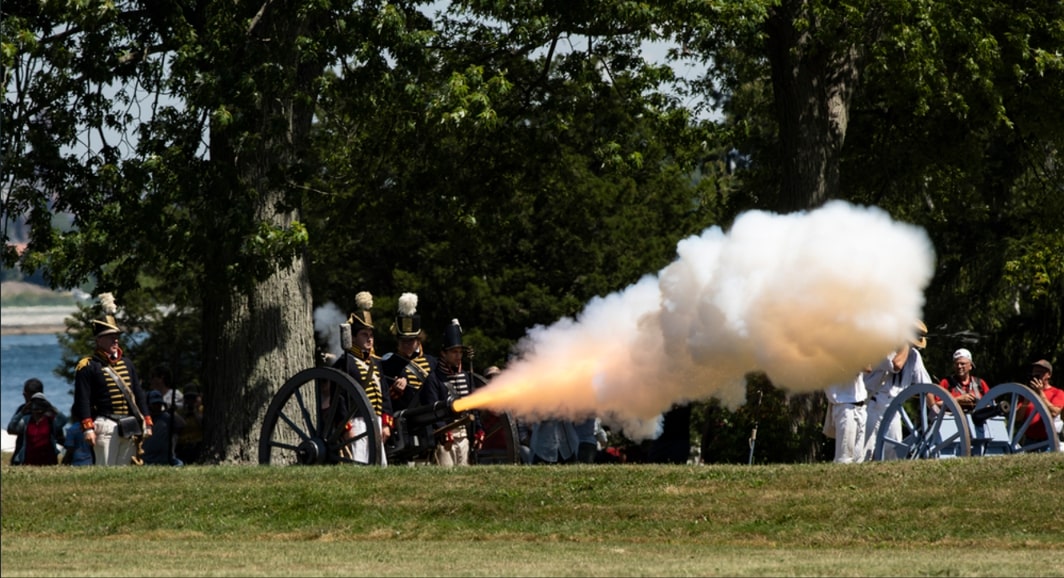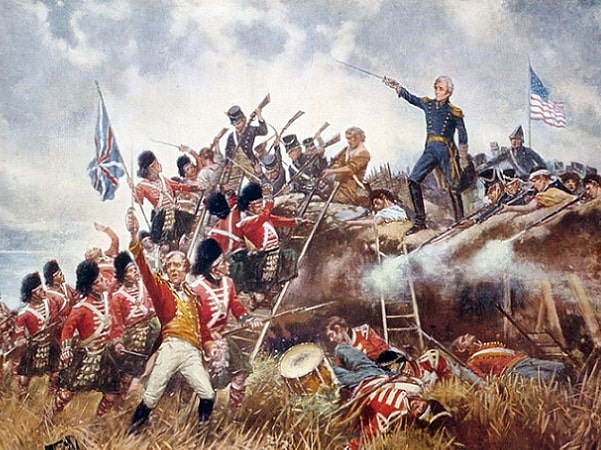Introduction: In this article – the second in a three-part series – Katie Rebecca Garner gives tips for researching your ancestor’s War of 1812 pension. Katie specializes in U.S. research for family history, enjoys writing and researching, and is developing curricula for teaching children genealogy.
Previously in part 1 of this series, we learned about War of 1812 pensions and what it took for our ancestors who were eligible to obtain one. We will continue this series by learning about what you can find in a War of 1812 pension record.
Because the soldier had to prove service in his pension application, there is typically information about the soldier’s name and rank, what unit the soldier served in, whom he served under, and whom he served with. Pension applications also contain bounty land applications, correspondence from the pension office, legal correspondence, and rejection letters.

Photo credit: https://depositphotos.com/home.html
Witnesses may have been fellow soldiers or neighbors. Often muster rolls are included, which indicate when a soldier was present or absent and the reason for the absence. If the soldier got wounded or sick during his service, there would be records about that, especially if that was why the soldier was eligible for a pension. The pension may also contain information about the soldier’s occupation and birth.
Case Study: Anthony McKinney
In part 1, we considered the pension for Anthony McKinney, who served in the U.S. Rangers under Captain Samuel McCormick. He received a pension of $8 per month ($194.62 in 2023) until 20 August 1874, when he died. Anthony’s widow, Catharine, was not eligible for a widow’s pension until the act of 1878 was passed, which expanded eligibility.
Anthony’s discharge papers stated that he was a farmer born in Kentucky and 20 years old. It even described him physically: he was five feet ten inches tall and had light hair, dark eyes, and a light complexion. Catharine also gave his physical description on her widow’s pension application, which almost matches the one on his discharge papers. She gave two different reports of his age, but the age on his discharge papers is more reliable because his record was closer to the event than hers.
Pensions of widows and heirs include kinship information and sometimes contain dates and places for all three vital events. Catharine McKinney’s widow’s pension application gives her marriage date to Anthony McKinney and mentions that he had previously been married to Elizabeth Bracken, who died in October 1855. The pension application also gives Catharine’s maiden name as Morrical.
Other vital information provided by Catherine’s pension records includes the death dates of her and Anthony: she died in 1909, and he died on 20 August 1874. In a letter in 1880, Catharine indicated that she was 60 years old, putting her approximate birth year in 1820. She mentioned in that same letter that she had six children, of which five were living.
Photo credit: https://depositphotos.com/home.html
These clues would be precious for any researcher learning about that family. Not only are multiple vital dates given, but the maiden names of both of Anthony McKinney’s wives are also given. Catharine’s mentions of her children are clues that would be useful in tracing them.
Along with the application, a pension file may contain other documents related to military service, such as payment vouchers, prison or casualty reports, and final payments. The final payments are rich in information about the family. In some cases, the final payment is the only surviving evidence of the pension.
Rejected pensions also contain much genealogically valuable information because our ancestors who applied for money left an extensive paper trail. Sometimes the rejection was due to the ancestor deserting during the war, which may mean the paper trail includes some juicy stories. Other times the rejection was because the ancestor didn’t have sufficient proof that they qualified, and would later qualify after submitting the needed additional evidence.
Each correspondence on the pension indicates where the pensioner resided at the time. This can help trace migration patterns, especially if the pension process was lengthy. One of the pension papers for Anthony and Catharine’s pensions lists their residencies over multiple years: he lived in Randolph County, Indiana, from 1855 to 1871, then they lived in Clear Lake, Cerro Gordo, Iowa, from 1871 to 1878. Other papers indicate they lived in Fairview, Randolph, Indiana, until his death, and then she moved to Clear Lake, Cerro Gordo, Iowa. A correspondence dated March 1872 was written in Randolph County, Indiana, supporting the papers stating the latter migration.
So far in parts 1 & 2, we have learned what it took for our ancestors to apply for War of 1812 pensions and the information pension applications and records leave us. The final part of this series will review how to research these valuable pension records.
Resources
- Anthony W. McKinney (Capt. Samuel McCormick U.S. Rangers, War of 1812), pension nos. SO11162, SC13803, WO22409, 24042; War of 1812 Pension and Bounty Land Warrant Application Files, digital images, National Archives (accessed 8 June 2023).
- https://familytreewebinars.com/webinar/revolutionary-war-series-4-of-5-records-created-by-the-revolutionary-war-after-the-war-pensions/?category=records&subcategory=military&subsubcategory=revolutionarywar
- https://familytreewebinars.com/webinar/accessing-national-archives-military-records-from-start-to-finish/?search=national%20archives
- https://www.legalgenealogist.com/2013/12/04/the-marriage-and-the-pension/
- https://www.legalgenealogist.com/2013/03/30/chasing-that-pension-file/
- https://www.familysearch.org/rootstech/session/what-does-that-really-say-records-analysis-1812-military-pension
- https://www.familysearch.org/rootstech/series/a-call-to-arms-researching-revolutionary-war-ancestors
- https://www.archives.gov/files/research/military/army/dc/m313.pdf
- https://www.familysearch.org/rootstech/session/resources-for-researching-your-war-of-1812-ancestor-online-part-1
- https://www.familysearch.org/rootstech/session/resources-for-researching-your-war-of-1812-ancestor-online-part-2
- https://familytreewebinars.com/webinar/the-war-of-1812-records-preserving-the-pensions/
- https://en.wikipedia.org/wiki/War_of_1812
Explore over 330 years of newspapers and historical records in GenealogyBank. Discover your family story! Start a 7-Day Free Trial
Note on the header image: General Andrew Jackson leads his troops at the Battle of New Orleans, War of 1812, by Edward Percy Moran. Credit: Library of Congress, Prints and Photographs Division.
Related Articles:
- Genealogy Tip: Your Ancestor’s Revolutionary War Pension (part 1)
- Genealogy Tip: Your Ancestor’s Revolutionary War Pension (part 2)
- Genealogy Tip: Your Ancestor’s Revolutionary War Pension (part 3)
- Genealogy Tips: Your Ancestor’s War of 1812 Pension (part 1)
- Genealogy Tip: Your Ancestor’s Civil War Pension (part 1)
- Genealogy Tip: Your Ancestor’s Civil War Pension (part 2)
- Genealogy Tip: Your Ancestor’s Civil War Pension (part 3)
